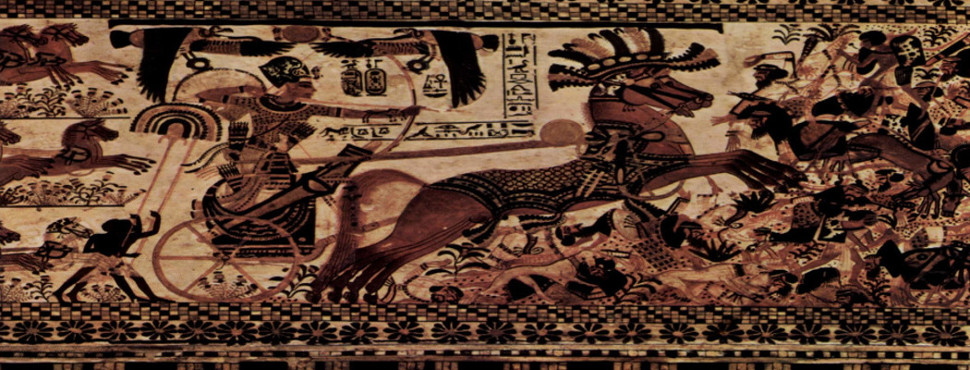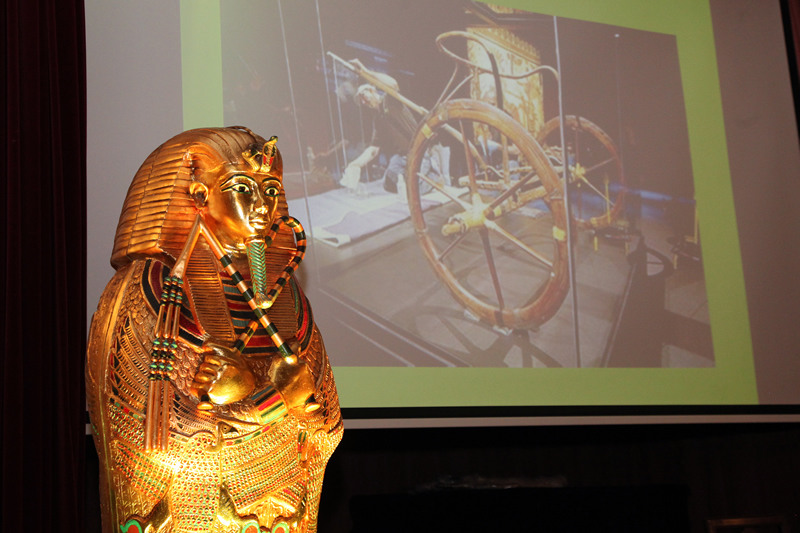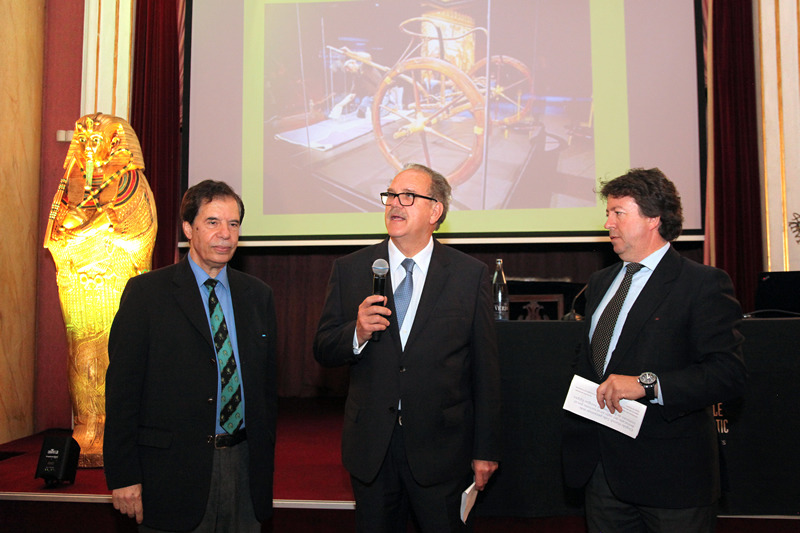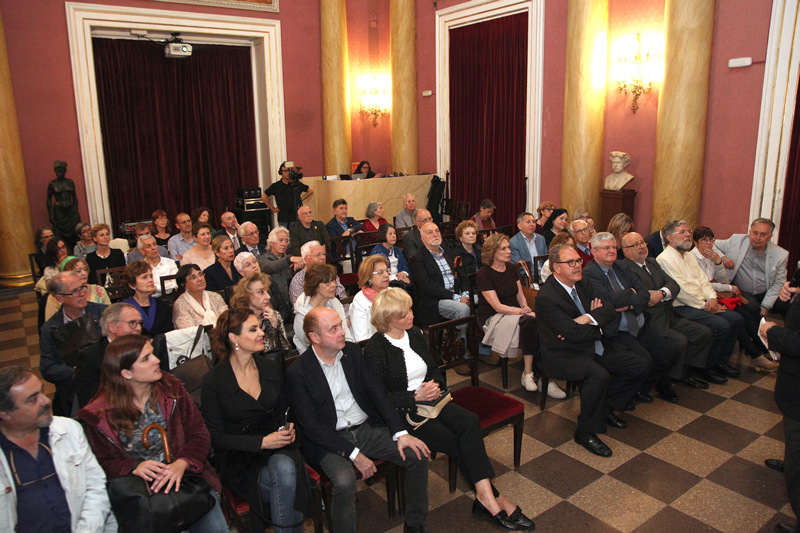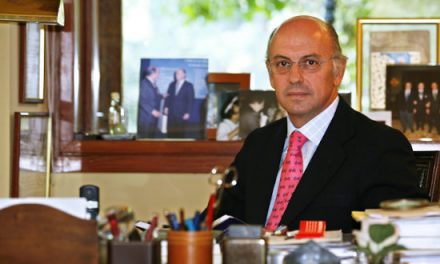The Royal Academy and the Royal Artistic Circle of Barcelona organized a session on the legendary Pharaoh
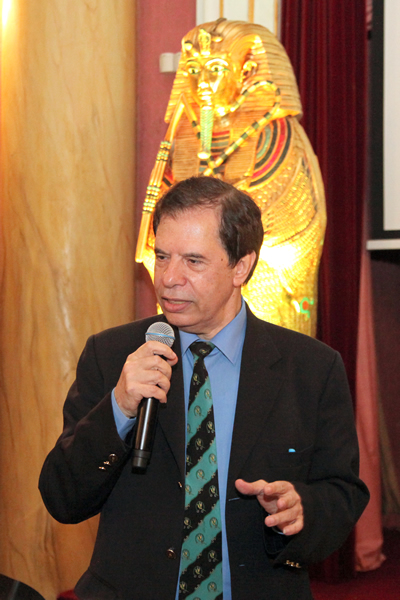
Sr. Hamdi Zaki
The Royal European Academy of Doctors-Barcelona 1914 (RAED) and the Royal Artistic Circle of Barcelona held, on May 8th in the Atlantes Rooms of this institution, a debate entitled “Misterio en vida y muerte. Tutankamón” (Mystery in life and death. Tutankhamun), which was attended by Hamdi Zaki, Tourism adviser to the Government of Egypt in Spain. The session was presented by Josep Fèlix Bentz, president of the Real Círculo Artístico.
Zaki explained the fascinating story of a pharaoh who died at age 18 after a reign of just six years. Belonging to the 18th Dynasty, he was born in the year 1341 BC and it is not known for sure who his parents were. The most accepted theory is that his father was Akhenaten, but the identity of the mother is unknown, although some archaeologists think that it is one of the minor wives of this one, Kiya. It’s also believed that he could have been the result of the union between Amenhotep III and his daughter, the princess Sitamun.
When the Egyptian pharaoh Akhenaten died without issue, his son-in-law Semenkera and Tutankhamun succeeded him. The latter was only 12 years old when he acceded to the throne in the year 1332 BC. He married one of his sisters, Ankhesenpaatun, who changed her name to Ankesenamun, daughter of his father Akhenaten and Nefertiti. He had been in power for three years when he decided to re-establish the traditional cult and return power to the priests of the god Amun, a cult that had been left aside in the previous reign. In addition, he repaired the damages and rebuilt the temples that had been affected after the reign of Akhenaten. Another of its measures was to move the capital. He decided to leave the city of Amarna, a city created by Akhenaten, and settled in Thebes.
His tomb was discovered in 1922 by Howard Carter in the Valley of the Kings. All their belongings were intact, which showed that it had not been sacked. The legend about his curse comes from the fact that many of the people who entered the tomb when it was discovered died shortly afterwards. The true causes of his death are not known with certainty. It’s believed that he died of a riot in the palace, but it could also be an infected wound or an illness, such as malaria.
For Zaki, the fascination that Tutankhamun produces three millennia after his death is worth a visit to Egypt, a country that he defined as safe and welcoming.
- Sr. Hamdi Zaki – Dr. Alfredo Rocafort – Dr. Josep Fèlix Bentz

